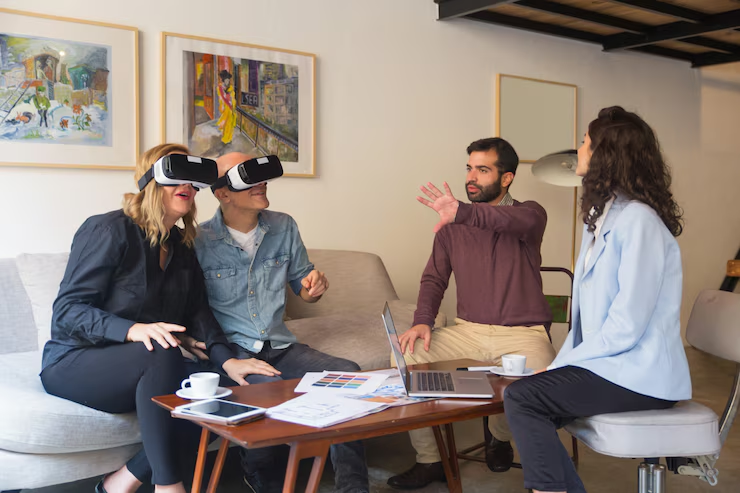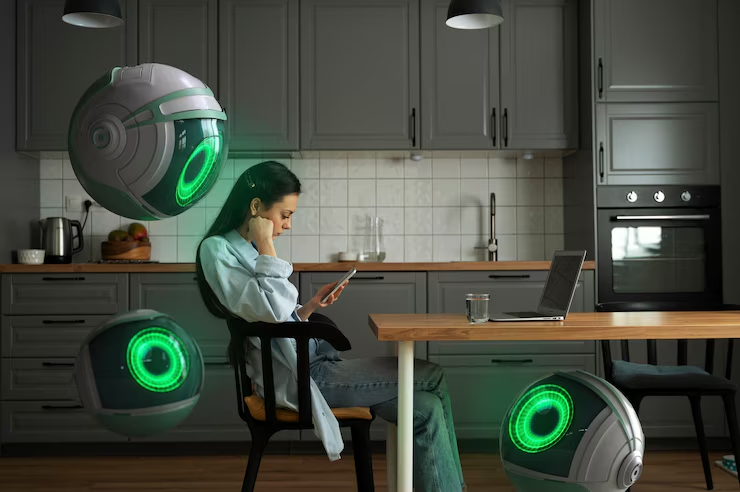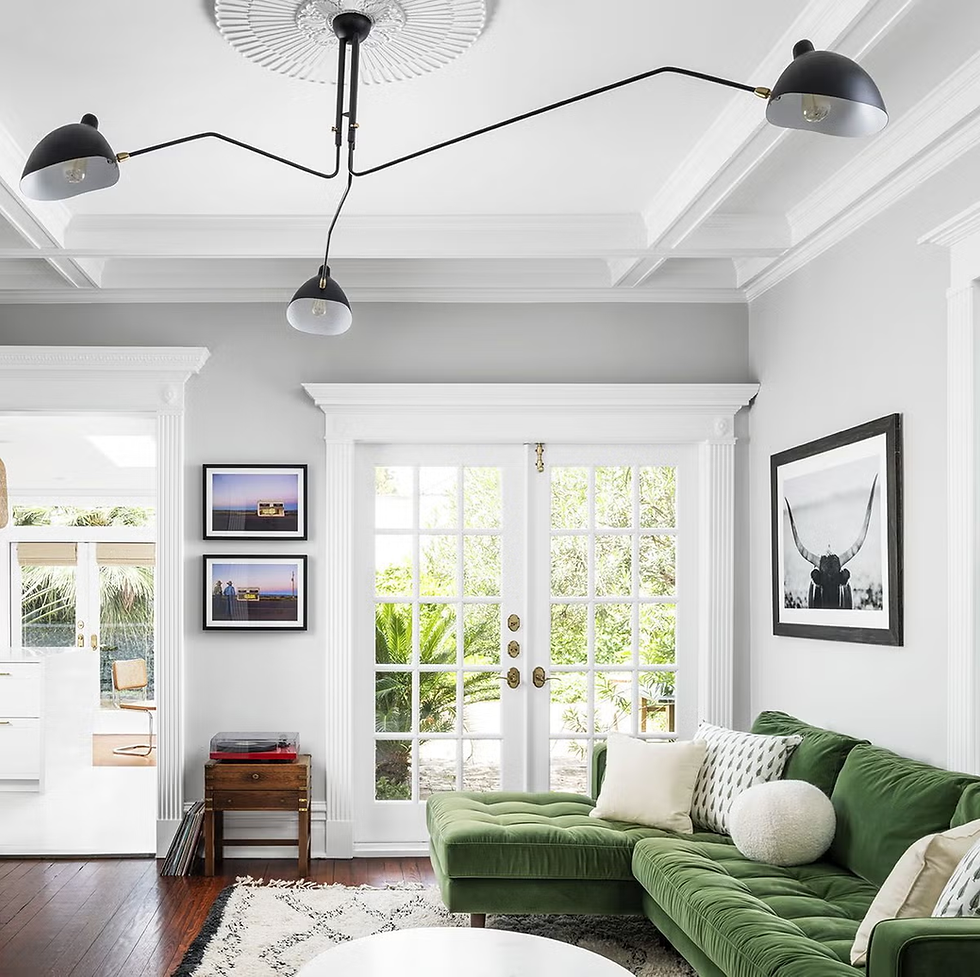How AI is Revolutionizing Home Design
- Staff Desk
- May 19
- 4 min read

In recent years, artificial intelligence (AI) has emerged as a transformative force across various industries. One area experiencing remarkable changes is home design. Homeowners, architects, and designers are harnessing AI tools to redefine traditional practices, resulting in more efficient, innovative, and personalized designs. Let’s explore how AI is shaping the future of home design and what this means for you.
AI Home Design

Artificial intelligence is making waves in home design by automating complex processes and providing tailored solutions. From conceptualizing layouts to choosing materials and colors, AI-driven design tools allow both professionals and novices to create stunning interiors and exteriors without requiring extensive expertise. For example, tools powered by AI can analyze thousands of design trends and user preferences to suggest ideas that align closely with a homeowner's vision.
One notable example is the use of AI for 3D visualization. Using AI algorithms, designers can produce highly detailed, photorealistic 3D renderings of spaces. This technology not only helps clients visualize their future homes but also facilitates timely and informed decision-making during the design process.

Benefits of AI in Home Design

The integration of AI in home design benefits various stakeholders involved in the building process. Here are some major advantages:
Time Efficiency: AI can significantly reduce the time it takes to generate design concepts. Traditional design processes often require many iterations and substantial input from designers. AI tools can automate many of these tasks, producing multiple options in minutes.
Cost Savings: By streamlining the design process and reducing the number of revisions, AI can help save costs for homeowners and builders. With fewer resources spent on redesigns, projects can stay within budget.
Personalization: AI can analyze user data to offer bespoke recommendations. For instance, it can suggest materials that align with a homeowner's preferences while considering functional requirements. This level of personalization ensures the design feels unique and tailored.
Sustainability: AI tools can assess the sustainability of different design options, helping homeowners make eco-friendly choices. For example, AI can recommend materials with lower carbon footprints or suggest energy-efficient layouts that maximize natural light.
Error Reduction: Human error is an unavoidable part of the design process. By employing AI, the likelihood of mistakes is minimized, leading to more accurate plans and specifications.
How AI Enhances Collaboration

Collaboration is essential in home design, and AI tools are enhancing how everyone involved communicates and shares ideas. For instance, design software that uses AI can provide a platform where clients, architects, and builders can all access the same information in real-time.
This cloud-based approach allows stakeholders to provide feedback immediately. AI-generated updates and revisions can be presented much faster, ensuring everyone stays on the same page. This rapid communication streamlines workflows and fosters a collaborative environment where each party can contribute their expertise effectively.

Is Home GPT Free?

As with many AI technologies, there are various pricing structures and options available for home design tools like Home GPT. While some basic features may be accessible for free, advanced functionalities often come with a subscription model or a one-time fee.
For example, various platforms may offer initial design options at no charge, but premium features like 3D rendering or personalized design consultations typically require payment. It's essential to explore various options and understand what level of service meets your needs and budget.
The Role of AI in Interior Design

Interior designers are also benefiting greatly from AI. Traditional interior design relies heavily on the designer's intuition and creativity. However, AI tools can provide valuable inputs that enhance this process. One key benefit is the ability of AI to analyze styles and trends across vast databases.
With machine learning, AI can identify what designs resonate most with specific demographics. This data-driven approach enables designers to offer suggestions that appeal to their clients. Additionally, AI can simulate how different colors and styles will look in a space through virtual staging.

Getting Started with AI Home Design

If you are interested in exploring AI in your home design projects, here are some actionable steps to get started:
Research Tools: Familiarize yourself with different AI design platforms available. Look for reviews and user feedback to select one that aligns with your vision and needs.
Start Simple: Initially, use AI tools for basic designs or layouts. Experiment with different styles and options to see how well the software aligns with your ideas.
Consult Experts: If you're uncertain about using AI for your home design, consider hiring a designer familiar with AI tools. They can guide you through the process and help turn your ideas into reality.
Focus on Integration: Over time, consider integrating AI tools directly into your standard design workflow. This integration can enhance efficiency and creativity in future projects.
Stay Updated: The field of AI is continuously evolving. Keep an eye on new trends and technologies that may enhance your design experience.
Future Trends in AI Home Design

As AI technology continues to grow, several exciting trends are likely to emerge in home design:
Augmented Reality (AR) Integration: By merging AI with AR, clients could visualize their designs in real-time within their actual spaces. Imagine walking through a room while wearing AR glasses that display suggested decor and furniture adjustments.
Smart Home Integration: Future AI design tools may also consider smart home technology during the design process, proposing layouts based on optimal placement for smart devices and appliances.
Advanced Personalization: The future may bring even greater personalization capabilities. As AI becomes more sophisticated, it will analyze user preferences more deeply and suggest designs that memorize not just style but also the lifestyle of the inhabitants.
Collaborative Artificial Intelligence: Envision AI working directly alongside designers, providing creative suggestions based on the latest design trends while still allowing human intuition and flair to shine through.
Exploring these trends provides not only insights into the future of home design but also fuels excitement about the possibilities. Whether you are a homeowner looking to renovate or a designer eager to incorporate innovative tools, the future of home design is bright with AI.
In summary, AI is revolutionizing home design by streamlining processes, enhancing collaboration, and offering bespoke solutions that cater to individual needs. As technology continues to evolve, the possibilities for personalized and efficient home design are only bound to expand. Dive into the world of ai home design and discover what the future holds for your living spaces.



Comments